New research shows that our galaxy was already in place prior to a major collision with a dwarf galaxy ten billion years ago. Plus, meteor showers, fast radio bursts, tardigrades, climate change, and a science review of Godzilla vs. Kong. No. Really!
Media
Transcript
Hello and welcome to the Daily Space. I am your host Dr. Pamela Gay.
And I am your host Beth Johnson.
And we are here to put science in your brain.
From day to day and year to year, our Sun changes in ways that are often missed to occupants of the Earth. People living in the far north like Alaska or the extreme south like Patagonia may see regular solar aurorae, but unless you are paying a lot of attention, you may not notice that these natural light shows have an eleven-year cycle.
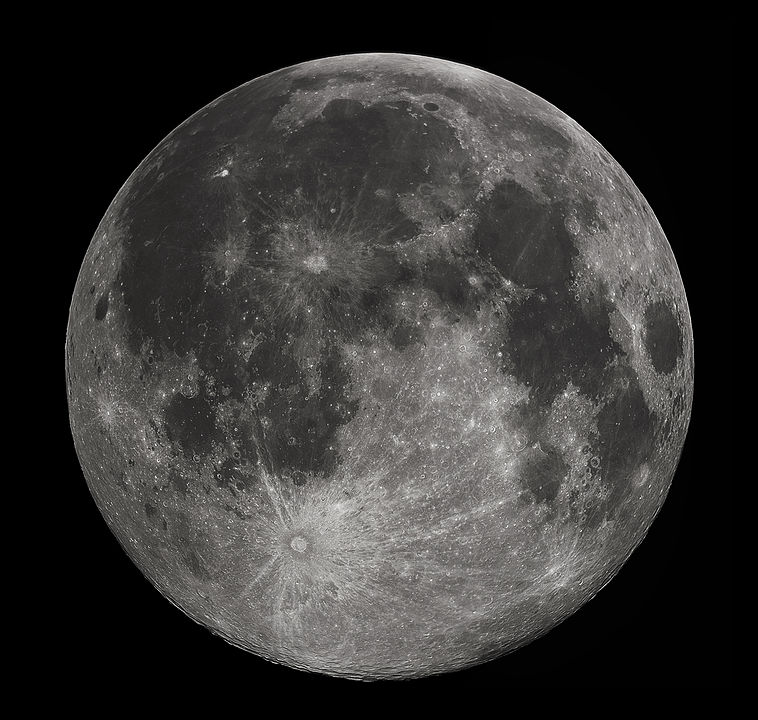
Our Sun’s magnetic field isn’t as stable as Earth’s, and over the course of eleven years, it will go from having a magnetic field that aligns with Earth’s to one that is not or the reverse. When the Sun’s magnetic field is most confused, mid-cycle, we see more solar activity like flares and coronal mass ejections. In a new paper in Solar Physics, researchers led by Mathew Owens looked at how the orientation affected the severity of this activity. And by severity, I mean they looked to see how likely the Sun was to do something dangerous to spacecraft and people outside the Earth’s magnetic field.
In odd-numbered cycles, the Sun’s field starts out in alignment, and in even cycles, it starts flipped relative to our magnetic field. This team found that when the Sun’s field is misaligned with Earth, solar activity has a more severe impact on Earth. Right now, we’re in an odd-numbered cycle, 25, which started in 2019, and we will hit solar maximum, when the Sun is most chaotic, around 2025. And as the sun’s magnetic field settles out to be oppositely aligned, we’re going to go through a period in the late 2020s when the Sun’s activity will be more dangerous.
While this science is cool on its own, it has one unfortunate real-world side-effect: as our ability to land people on the Moon ramps up at the end of the 2020s, the Sun’s potential to kill people will also be ramping up. During the Apollo program, a major solar eruption in 1972 randomly occurred between Apollo 16 and 17. That was luck. Now, we need to plan how to handle not being so lucky next time.
A lot of science requires a combo of luck and really hard work. In this next story, researchers used systematic measurements of meteors to identify the paths of long-period comets.

Using nine-camera sets scattered around the world, they watched for groups of objects that appeared to radiate from a single point in the sky. That point represented where the Earth’s atmosphere intersected with the debris of a comet or active asteroid that passed through our solar system in the past. With the longest period comets, objects that circle every 4000 years or so, the debris trails are super narrow, and using their nine-camera sets, this team has now identified nine new meteor showers with high certainty and an additional six possible debris trails.
Building those nine-camera sets and analyzing their data is where the hard work came into play and having those showers occur when there was a cloud-free night sky overhead for some of those cameras was where the luck comes in. We can’t wait to see what all this team finds as they continue to look up and statistically analyze those glorious streaks we all can see with our eyes.
Not everyone experiences this kind of luck. The Beresheet mission to the Moon and its crew of tiny tardigrades landed a bit violently, with a velocity of a few hundred meters per second. Okay, it crashed. Folks, a spacecraft with a crew of tardigrades crashed onto the Moon.
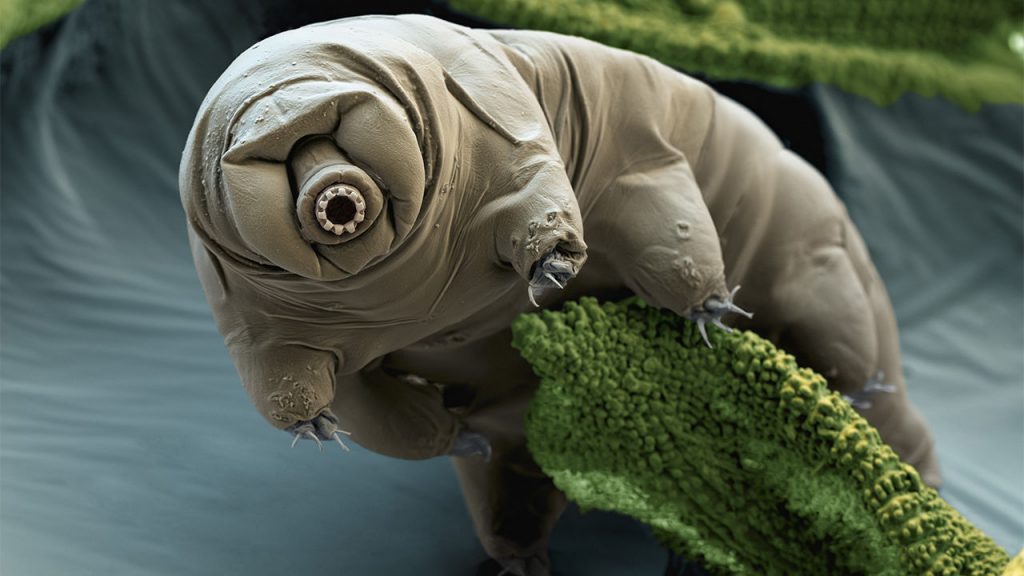
Tardigrades, tiny extremophiles often seen in microscope imagery of pond water, are really hard to kill, and folks, including me, have wondered if the tardigrades might have survived this impact. One of these curious folks was Ph.D. student Alejandra Traspas who turned his curiosity into research and, I kid you not, placed well-fed tardigrades into hollow nylon bullets and fired them into sand several meters away.
They found that while tardigrades could survive the bullet impacting at 900 meters per second, sudden jolts of just 1.14 gigapascals would kill them. This means that had they been able to decelerate through sand, they would have survived, but that moment when the spacecraft hit and crumpled, the shocks from that would have killed the critters. While I’m sad there probably isn’t a generation of tardigrades ready to spring to life on the Moon, this is probably for the best; we really don’t want to contaminate everything in the solar system with Earth life.
Folks, we try really hard to tell a story with all our news items, but sometimes things just don’t fit together. From solar system events, we are now going to wildly jump to extragalactic astronomy.

Roughly one thousand wildly powerful bursts of radio energy have been detected and just fifteen of them have been linked to a galaxy – spiral galaxies, in fact. The Fast Radio Bursts (FRBs), which last seconds or even fractions of a second, aren’t associated with the bright star-forming regions of galaxies, where stars are young. This supports the theory that Fast Radio Bursts come from old dead stars, like neutron stars with massive magnetic fields, called magnetars. According to team member Wen-fai Fong: We don’t know what causes FRBs, so it’s really important to use context when we have it.
In this case, the context rules out massive young stars. Fong goes on to add: Massive stars go through stellar evolution and become neutron stars, some of which can be strongly magnetized, leading to flares and magnetic processes on their surfaces, which can emit radio light. Our study fits in with that picture.
Before you can get Fast Radio Bursts, you need to build a galaxy. We try to understand how that occurs from two different directions – by observing our galaxy and by looking for galaxies forming in the early universe.
From our position inside the Milky Way, we can study our system’s individual stars to get a sense of the generations and their chemical genetics. Stars generally form in clusters, with all the stars in the cluster having the same chemical composition. Particularly small galaxies may even form all their stars in a single burst, where the tiny galaxy is essentially a single large star cluster.
Most larger galaxies form through the merger of small systems, and our own Milky Way is included in that most. As projects like the Sloan Digital Sky Survey and the Gaia mission measure the colors and positions of stars, they identify streams of same-composition, same-age stars that became part of our Milky Way when their small home galaxy merged into our galaxy. Remarkably, though, for as many streams of colliding objects we find, it still looks like most of our galaxy was already in place ten billion years ago, with what we see now only merging later.

The earliest major merger to be identified was the collision of what is being called the Gaia Sausage galaxy. The Gaia spacecraft discovered a family of stars that are all of the same composition and that are orbiting at a weird angle to the rest of the disk of the Milky Way. Those stars were slightly younger than the Milky Way’s native stars. This means the bulk of our stars are older, and our disk was mostly formed before the Milky Way and Sausage galaxies collided and even before the Sausage galaxy was made. Our galaxy put simply is really old and was already pretty big early in the history of the universe.
One of the major rules of science is that we start from the belief that we don’t occupy a special place in the universe. This means that whatever we see shouldn’t be too different from what we’d see from somewhere else, and whatever got us here should have also happened elsewhere. Using the Atacama Large Millimeter/submillimeter Array (ALMA), researchers were able to find galaxies showing vague spiral structures more than twelve billion years ago.
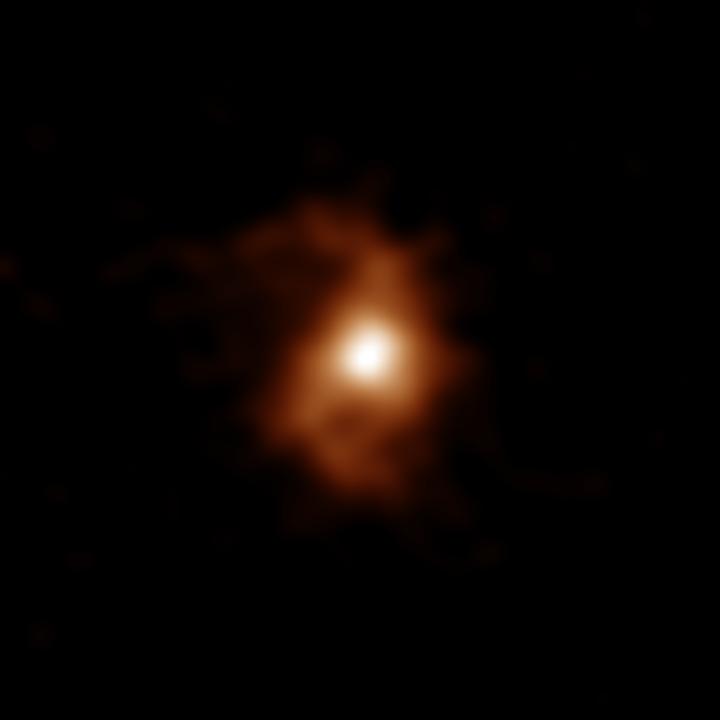
These earliest systems were a little weird, were compact, and their structure is most likely driven by interactions with invisible companions. How the galaxy evolved from these weird early systems to the universe we see today isn’t well understood, but it looks like we can thank galaxy interactions both for forming spiral structures and building up large galaxies over time. While ALMA creates shockingly good images, the JWST was actually designed to tell us how galaxies formed. It looks like JWST’s launch is going to be delayed again, this time due to the rocket, so the answers on how galaxies evolved from what ALMA sees to what we see locally… we’re going to have to wait a bit longer.
We don’t need the JWST to learn more about Earth, so that’s something. We have our own Earth observation satellites, from different agencies and countries, all trying to understand how our planet is changing and how it might continue to change. And sometimes, we read a story that has cool science but terrifying consequences. This next phenomenon even has a terrifying name – zombie fires.
We’ve all seen on the news, and frankly, I’ve experienced it here in California, that our annual fire season is getting worse with the hotter, dryer conditions. Winds blow, flames spark, and I’m wearing a different kind of mask to keep the ash and particulates out of my lungs. It’s not been fun. And it could get worse in regions like Alaska.

Sometimes, fires can hibernate underground. They get knocked down by firefighters or weather, then the area gets buried under snow, and the fire continues smoldering over the winter. It survives by consuming the carbon-rich peat and boreal soil and creeping slowly underground. Then, when the spring thaws come, the fire reemerges near the previous fire location and starts back up before the usual fire season. Firefighters suspected this was happening. And now scientists checking out satellite images of burned regions have found the proof.
Fortunately, zombie fires are rare and only account for 0.8 percent of the total area burned in Alaska and northern Canada for the seven years examined. The issue is that when warmer summers have occurred, the zombie fires were more likely because the fires were overwintering even deeper underground. And now, well, hotter summers are the rule and not the exception, so this team of scientists expects the percentage of zombie fires will increase. Their work can be found in Nature.
And speaking of increases, it looks like this year will be another above-normal year for hurricane season. But it won’t be as bad as last year, so that’s a good thing, right?
NOAA released its outlook for this year’s Atlantic hurricane season, and they’re predicting 13-20 named tropical storms. We typically have fourteen. Additionally, the number of major hurricanes is likely to be up this season, with three to five predicted. Normally, we have three. So there is a chance that the total season could be close to normal, but it’s on the low end of the predictions.
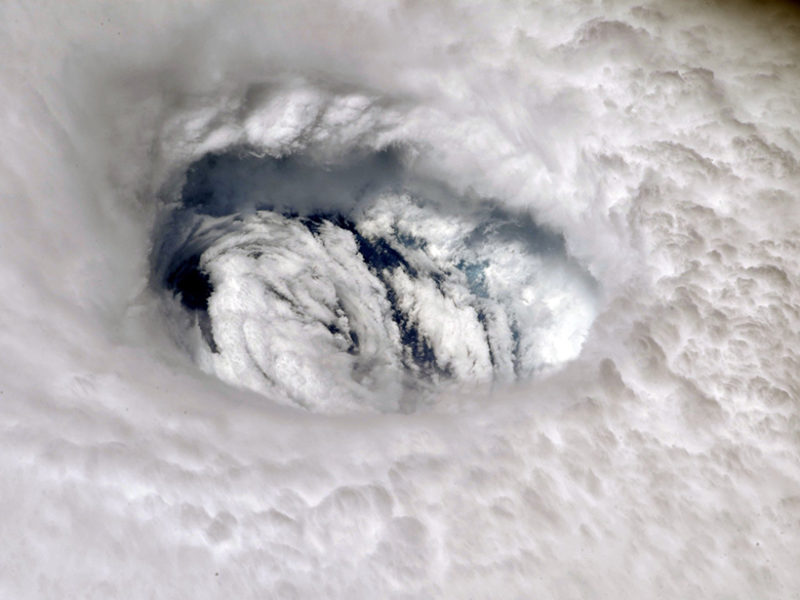
I should note that climate change has so far not been found to be responsible for the increase in the number of hurricanes; however, there is evidence that the increasing intensity of the storms is a result of that climate change. There’s a particular climate fluctuation that has been in a warm phase since 1995. Add in the possibility of warmer water in the Pacific, and we could be in for quite the hurricane season.
As a reminder, last year broke records for the number of named storms. There were thirty. This means the naming scheme in the Atlantic had to use the Greek alphabet. I only remember seeing that happen one other time, and that was a hurricane season that went into the next year. Typically, the season runs from June to November. December and January named storms are rare.
So to all our followers and fans in the region of the southeast United States, the Gulf of Mexico, and the Caribbean, please be prepared. Get your disaster plans in place, check on your batteries, have a plan to evacuate and ways to secure your home. We want you all to be safe over the coming months.
Review

A few weeks ago, my son begged me to go to the movies, in an actual theatre, with actual movie popcorn. And because that movie popcorn was such a temptation, and I’m all vaccinated, I agreed and I let him choose the movie. He chose Godzilla vs. Kong, which is, I admit, not my usual fare. I do love a good action movie, and I have nothing against kaiju flicks. Pacific Rim is a masterpiece, in my opinion. But I haven’t seen a Godzilla movie since the 1990s one with Matthew Broderick. I took my father to that one, as he’s a huge Godzilla fan, and while it was not good, at least it was silly and a good time was had. So I expected about the same for this movie.
For the most part, I enjoyed the film. Look. It’s Millie Bobby Brown from Stranger Things being her most sassy as a conspiracy theorist trying to find out what is going on. That alone was worth the price of admission. Add in some good writing and great special effects, and overall, it’s perfect for hanging with your kid and watching monsters fight.
But then there was the science. And oh, I tried to get past this part, y’all. I tried. Except my eyes rolled back in my head so hard that I hurt myself. My son wanted to know what was wrong, so I whispered back two words: “Hollow Earth”.
And now, I will warn you that there are spoilers. One of the major plot points of this film is that they are trying to return Kong to the homeland of the titans, and there’s a rather disgraced scientist who believes that homeland is inside the Earth. There’s a whole gravitational field issue to deal with, the bad guys have the vehicle to survive it, yadda yadda yadda. And eventually, we find our way there. Kong, of course, being from there, just jumps right in and is fine. Everyone else has to deal with a gravitational distortion, and I was marginally okay with this idea.
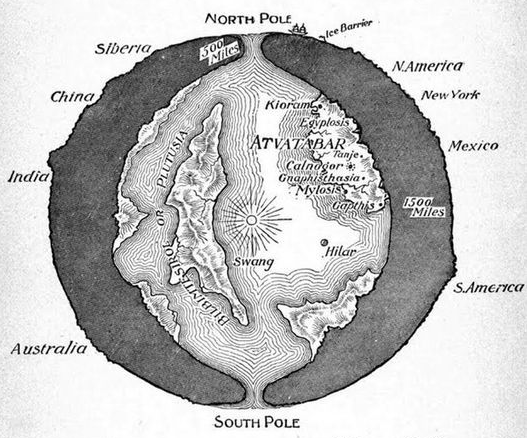
Even the concept of Hollow Earth as a science fiction trope doesn’t really bother me that much. It’s been done for centuries, starting with Ludvig Holberg’s novel “Niel Klim’s Underground Travels” in 1741, through Jules Verne’s “Journey to the Center of the Earth” in 1864, to modern versions like Gears of War and the Hollow World campaign in Dungeons and Dragons.
So why was I bothered by this version? The visuals were stunning. Gravity was a bit all over the place. But it’s this subterranean, prehistoric world, and there is green vegetation everywhere. EVERYWHERE. There is no light source but for one volcano? No Sun. Nothing that should be giving plants a way to do photosynthesis. And no. I cannot. I tried. I did. Sadly, that is what broke my suspension of disbelief.
Now Hollow Earth was once a popular hypothesis. It was proven incorrect back in 1774 by the Schiehallion experiment, which was the follow-up to an early expedition. These two separate science teams climbed mountains and performed vertical deflection experiments to understand changes in gravitational attraction. Basically, you hang a pendulum and measure the angle of the plumb-bob as it is pulled by the gravity of a large body, like a mountain. By finding the pull on opposite sides, you can work your way to finding the mean density of the Earth, and they showed from all these calculations that Earth is not hollow.
Still, the trope persists, but I guess it’s not one for me. I still think the movie is worth a watch if that’s your thing.
For now, though, this has been the Daily Space.
Learn More
Moon vs Solar Activity: Astronauts Can’t Win
- University of Reading press release
- “Extreme Space-Weather Events and the Solar Cycle,” Mathew J. Owens et al., 2021 May 20, Solar Physics
Short Meteor Showers Showcase Long-Period Comets
- SETI Institute press release
- “Meteor showers from known long-period comets,” Peter Jenniskens et al., 2021 April 20, Icarus
Tardigrades Designed for High Impact Collisions
- Hardy water bears survive bullet impacts—up to a point (Science)
- “Tardigrade Survival Limits in High-Speed Impacts—Implications for Panspermia and Collection of Samples from Plumes Emitted by Ice Worlds,” Alejandra Traspas and Mark J. Burchell, 2021 May 11, Astrobiology
Fast Radio Bursts Found in Galaxy Arms
- NASA press release
- “A High-Resolution View of Fast Radio Burst Host Environments,” Alexandra G. Mannings et al., to be published in The Astrophysical Journal (preprint on arxiv.org)
Galaxies: They Grow Up So Fast
- The Ohio State University press release
- The Milky Way may have grown up faster than astronomers suspected (Science News)
- “Chronologically dating the early assembly of the Milky Way,” Josefina Montalbán et al., 2021 May 17, Nature Astronomy
- ALMA press release
- “Spiral morphology in an intensely star-forming disk galaxy more than 12 billion years ago,” Takafumi Tsukui and Satoru Iguchi, 2021 May 20, Science
Zombie Fires Possibly on the Rise
- Vrije Universiteit Amsterdam press release
- ‘Zombie’ forest fires may become more common with climate change (Science News)
- “Overwintering fires in boreal forests,” Rebecca C. Scholten et al., 2021 May 19, Nature
Plan for More Hurricanes Than Normal This Year
- NOAA press release
- Your Summer Outlook: Cloudy with an Above-Normal Chance of Hurricanes (Eos)
- “Global increase in major tropical cyclone exceedance probability over the past four decades,” James P. Kossin, Kenneth R. Knapp, Timothy L. Olander, and Christopher S. Velden, 2020 June 2, PNAS
Hollow Earth Trope and Its Debunking
- Hollow Earth (Wikipedia)
- The Hollow Earth Theory Isn’t So Funny Anymore (Wired)
Credits
Written by Pamela Gay and Beth Johnson
Hosted by Pamela Gay and Beth Johnson
Audio and Video Editing by Ally Pelphrey
Content Editing by Beth Johnson
Intro and Outro music by Kevin MacLeod, https://incompetech.com/music/


 We record most shows live, on Twitch. Follow us today to get alerts when we go live.
We record most shows live, on Twitch. Follow us today to get alerts when we go live.